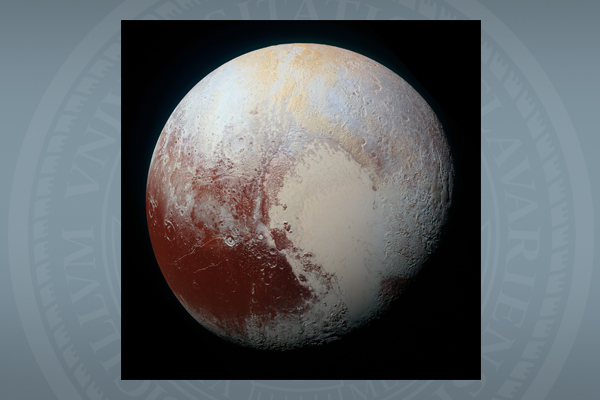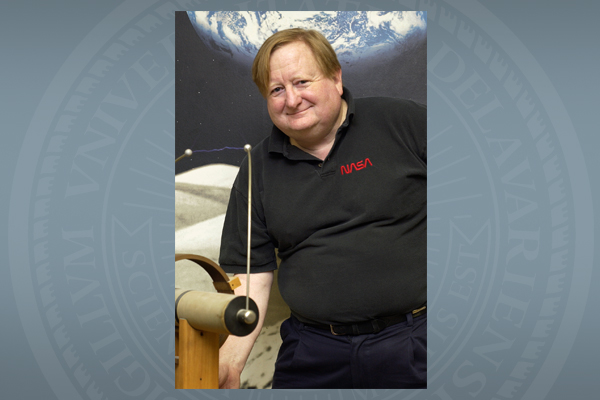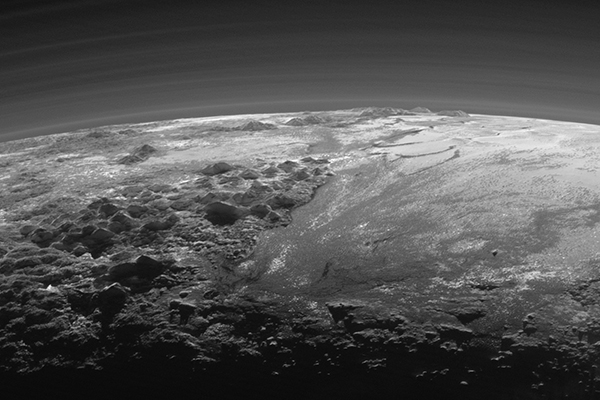


April 26: Pluto unwrapped
UD astronomer to share latest findings from NASA mission
8:51 a.m., April 4, 2016--So far, about half the photos of Pluto taken by NASA’s New Horizons spacecraft last July have reached Earth, sent from more than 3 billion miles away.
Bit by bit, they are helping us to finally see the far-off planet that through telescopes looked like only a “tiny, fuzzy ball,” says Harry Shipman, an astronomer at the University of Delaware.
Research Stories
Chronic wounds
Prof. Heck's legacy
“We expected to see a whole bunch of craters on Pluto’s surface like on the moon,” says Shipman, who is the Annie Jump Cannon Chair of Physics and Astronomy at UD. But with the first New Horizons images, a wondrously different world came into view.
“Pluto is so unique,” says Shipman. “Here’s a planet with craterless, frozen plains, and mountains made of nitrogen and methane ice — much softer than the ice cubes in your drinking glass. Geologically speaking, Pluto’s still alive, with blobs of floating ice slowly being moved around by convection currents driven by heat deep within the planet.”
On Tuesday, April 26, in the spring edition of the Harcourt C. (Ace) Vernon Memorial Lecture at UD, Shipman will share some of the latest mission photos and highlight what scientists now know about Pluto and the many mysteries that remain. The lecture, which is free and open to the public, will begin at 7:30 p.m. at the Clayton Hall Conference Center. To ensure seating, register at this website.
Shipman’s research interests include astrophysics, asteroseismology — the study of pulsating stars, and science education. He has written four books on astronomy and the space program including the popular Black Holes, Quasars, and the Universe.
Shipman received his bachelor’s degree from Harvard University and his doctorate from the California Institute of Technology. He also has received the National Science Foundation’s Distinguished Teaching Scholar Award.
The Vernon Memorial Lecture is sponsored by the University’s Delaware Asteroseismic Research Center and the Mount Cuba Astronomical Observatory in Greenville, Delaware. The lecture honors the late Harcourt C. (Ace) Vernon (1907-78), who was one of the observatory’s founders and the first chairman of its board of trustees.
Article by Tracey Bryant










